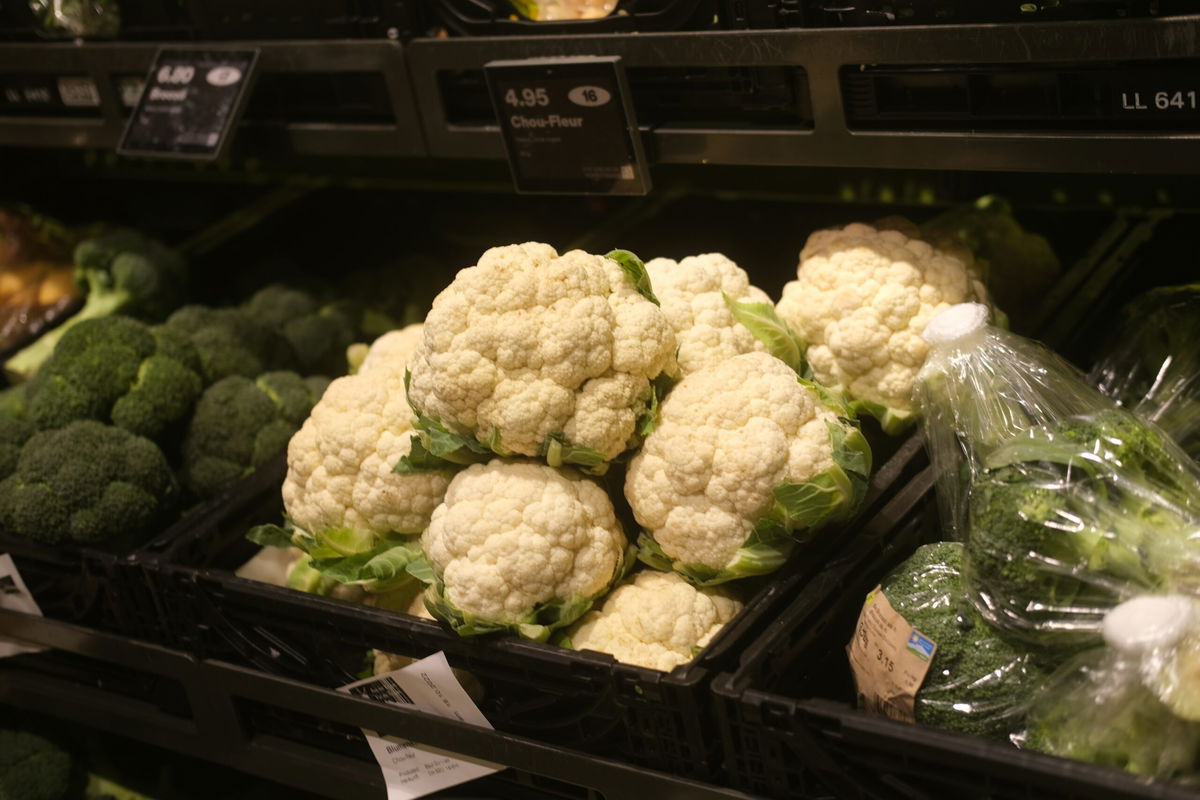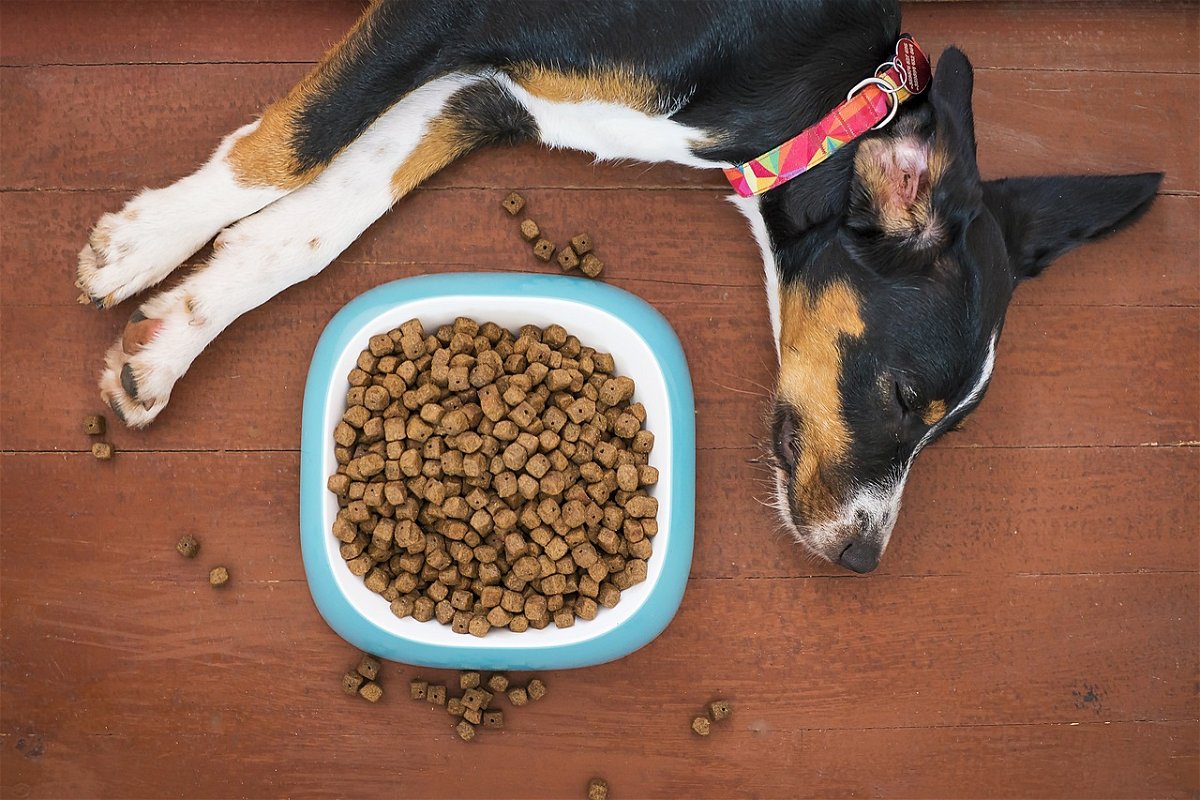We're an affiliate
We hope you love the products we recommend! Just so you know, we may collect a share of sales or other compensation from the links on this page at no additional cost to you. Thank you if you use our links, we really appreciate it!
You’ve just returned from the vet after learning that your dog has a yeast infection. But what do you feed a dog with a yeast infection? Your dog’s diet significantly influences how yeast thrives in their gut. In this article, we will cover:
- Selecting the appropriate diet for a dog with a yeast infection.
- Raw ingredient-based diets.
- Commercial food diets.
- Feeding guidelines for dogs with yeast infections.
- Foods to avoid when your dog has a yeast infection.
Understanding how to manage a yeast infection in your dog will alleviate uncertainty and provide you with a clear strategy to ensure your dog’s health.
How Diet Can Manage Yeast Infections in Dogs
Your dog’s diet has a huge impact on the yeast in its gut, a small amount of yeast is normal but when your dog’s good gut bacteria fail to hold it in check, it can grow out of control.
Yeast feeds off of starch and sugar, so a key component to deterring yeast overgrowth is to starve it of these nutrients.
Selecting the appropriate diet is crucial for a dog dealing with a yeast infection, your aim should not only be to deprive the yeast of nutrition but also to ensure your dog receives all the essential nutrients required for optimal well-being.
Choosing the Right Food for a Dog With a Yeast Infection
There are several key things you need to look for when choosing food for a dog with a yeast infection.
Quality Ingredients
Make sure you choose a diet that has good-quality ingredients, you want to feed your dog a diet that is mostly healthy lean proteins such as chicken or lamb, healthy fats, and almost no carbohydrates.
Avoid low-quality fish known to contain mercury as yeast thrives on heavy metals.
Limited Carbohydrates
As previously stated, yeast thrives on carbohydrates including sugar and starches. The fewer carbohydrates you feed the better, be careful with grain-free foods as they can often be full of potatoes, tapioca, and sweet potatoes.
They still have plenty of starches for yeast to feed on.
Anti-Inflammatory Ingredients
Yeast infections tend to inflame both the gut and other parts of the body, this is one reason that anti-inflammatory foods are great for a dog with a yeast infection.
Anything rich in omega-3 fatty acids will help your dog such as salmon or eggs.
Probiotics and Prebiotics
These are very important for promoting gut health, they can help combat yeast overgrowth. Probiotics only live in your dog’s body for a few days, but prebiotics (or fiber) will help promote the friendly bacteria in your dog’s gut so it can outlast the yeast.
For more details about the differences between prebiotics and probiotics, you can have a look at this article.
Natural Anti-Fungal Food
Several antifungal foods help to kill off the yeast, they do this by penetrating the cell membrane of the yeast. A few examples are coconut oil and garlic.
So what are some specific homemade food options to feed your dog when they have a yeast infection?
Homemade Food Options for Dogs With Yeast Infections
Make sure you feed your dog a balanced diet as you work to starve out the yeast.
Lean Proteins
Meats such as chicken, turkey, and lean beef make great protein sources.
Low-Glycemic Vegetables
Broccoli, cauliflower, celery, and zucchini are all starch-free vegetables.

Healthy Fats
Make sure your dog is getting healthy oils such as fish oil and flaxseed oil. This will give them good omega-3 fatty acids to aid with inflammation.
Probiotic-Rich Foods
Foods like plain yogurt or kefir can help aid your dog’s healthy gut bacteria leading to better gut health.
This is great, but what if you don’t want to make your dog’s food?
Commercial Food Options for Dogs With Yeast Infections
Many commercial dog foods support the needs of a dog with a yeast infection.
Limited Ingredient Diets (LIDs)
These commercial foods usually only contain one protein source, they do tend to have carbohydrates so make sure you are checking the label to find one with the least amount.
Grain-Free Formulas
Grain-free commercial foods contain no grain, but that doesn’t mean they don’t have starch and sugar. Make sure you read the label to find a grain-free food that doesn’t have potatoes, sweet potatoes, and tapioca. There are good grain-free foods, you just have to look harder.
Prescription Diets
If your dog has a severe yeast infection it is best to get vet-prescribed food for your dog, getting their gut health back in check and healthy is very important.
Now let’s look at the best ways to feed your dog if they have a yeast infection.
Feeding Tips for Dogs With Yeast Infections
How you feed your dog can affect their overall gut health, so making sure to avoid overfeeding is important. If you overfeed your dog too much they will get more carbohydrates as you know, carbohydrates feed yeast.
It’s also a good idea to feed your dog small meals frequently, feeding digestive enzymes between meals rather than with them will allow the enzymes to feed on yeast rather than the food you fed your dog.
Make sure your dog has access to fresh water at all times to support their healthy recovery.
What are some foods you should avoid if your dog has a yeast infection?
Avoiding Problematic Foods
There are several types of foods you should avoid if your dog has a yeast infection, limit high glycemic carbs they contain starches and sugars that will feed the yeast.
You should also avoid feeding your dog foods they may potentially be allergic to, their gut is already inflamed with yeast. This is where Limited Ingredient Diets are helpful.
Foods with lots of artificial additives are also not great for a dog with a yeast infection, artificial ingredients cause more inflammation and can make your dog even more uncomfortable.
So what specific foods should you avoid when feeding your dog?
What Foods Should Dogs With Yeast Infections Avoid?
There are several categories of foods to be careful of when your dog has a yeast infection.
High-Sugar Foods
Yeast feeds on sugar so high-sugar foods should be avoided to avoid the fast growth of yeast colonies.
- Peas
- Carrots
- Sweet potatoes
- Apples
Carbohydrate-Rich Diets
Starches are a key ingredient that yeast feeds on, carbohydrates are often both starch and sugar. Making them the optimal food to fuel a yeast infestation.
- Potatoes
- Legumes
- Root Vegetables
Grain-Based Foods
Grain-based foods feed yeast and can cause inflammation of the gut, you should avoid them if your dog has a yeast infection.
- Wheat
- Corn
- Barley
- Oats
- Rice
Foods with Additives
Artificial additives disrupt gut health and often cause inflammation.
- Propyl gallate
- BHA
- BHT
- MSG
Allergenic Ingredients
Make sure you know about any allergies your dog has, feeding your dog allergens while they have a yeast infection can increase inflammation. Common allergens:
- Beef
- Wheat
- Eggs
- Chicken
- Soy
Dairy Products
Dairy can lead to weight gain as it is high in fat, it can also affect gut health. Dogs are often lactose intolerant, dairy also has quite a bit of sugar in it, which yeast feeds on. Aside from yogurt which has probiotics, you should avoid other dairy products:
- Milk
- Cheese
It may seem like a lot of food isn’t good for a dog with yeast infections, but there are good strategies to use to make sure you don’t feed them.
Making Informed Food Choices to Prevent Yeast Overgrowth
First, check ingredient lists on labels, reading the ingredient labels will tell you everything that is in your dog’s food. Including hidden sugars and carbohydrates.
Once you find an appropriate food for your dog, transition slowly, you don’t want to shock your dog’s digestive system by switching all at once.
Gradually decrease the amount of old food you feed, as you slowly increase their new food intake. This is the best way to transition to a new diet.
Finally, if you’re unsure of anything ask your veterinarian, it is always good to get professional advice to custom-tailor your dog’s diet to its needs.
FAQs
Will feeding my dog yogurt help yeast infection?
Yogurt contains probiotics that boost gut health by feeding the healthy bacteria, it will help if your dog has a yeast infection.
Does apple cider vinegar get rid of yeast in dogs?
Apple cider vinegar can help with yeast infections on the skin, but it won’t kill the yeast in your dog’s gut, make sure you dilute it with water before applying it to the skin.
Is coconut oil good for yeast infections in dogs?
Coconut oil contains fatty acids that destroy yeast, it is also good as it doesn’t destroy the good bacteria.
How long does it take to see improvements in my dog’s yeast infection symptoms after changing their diet?
Mild yeast infections may take a few weeks to clear up, more severe cases can take much longer. You have to keep treating it for a week to ten days after it seems to have cleared up to make sure it doesn’t come back.
Can I use supplements alongside dietary changes to help manage yeast infections?
There are many good enzymes that you can use to help clear up yeast infections, you should also use probiotics and prebiotics.
Conclusion
A low-carb, high-protein diet with lots of good healthy fats is the best diet for a dog with a yeast infection.
There are many options, from homemade to commercial, that will support your dog’s health. Knowing the ingredient label is critical to avoid ingredients that have negative impacts.
You should consult your veterinarian to get you on the right path, every pet has different dietary needs. Supporting your pup’s digestive health will leave it happy and healthy!
Laura is the founder of Furs'n'Paws. She is a also a pet writer and expert with more than 20 years of experience of working with dogs and cats. She developed a very strong love for animals at a young age. Her passion led her to establish a thriving pet sitting and dog walking business in Dubai. As an expert in pet training, behavior, and nutrition, Laura is committed to helping pet owners and pet lovers by offering high-quality information on a wide range of topics.



No responses yet